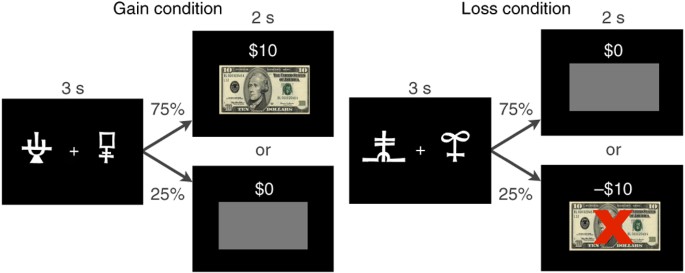- Select a language for the TTS:
- UK English Female
- UK English Male
- US English Female
- US English Male
- Australian Female
- Australian Male
- Language selected: (auto detect) - EN
Play all audios:
VOL: 101, ISSUE: 28, PAGE NO: 38 Keith Brunton, BSc, RMN, is community psychiatric nurse at South Central Secondary Community Mental Health Team, Edinburgh The purpose of this paper is to
review the literature on how psychiatric nurses assess risk. It examines the different risk-management strategies used, discusses the rationale behind them and highlights recent research
looking at how nurses assess the risk of violence in crisis situations. While it has been written from the point of view of psychiatric nursing, the paper discusses issues that are relevant
to all fields of nursing. REVIEW STRATEGY Studies were identified by searching a number of electronic databases related to health care, using relevant terms and keywords. Table 1 lists the
databases, search terms and search periods used. A wider search was then undertaken using two methods: - The references cited in the studies identified from the databases were examined for
other relevant studies; - Internet search engines were used to search for the term ‘psychiatric nursing risk assessment’. THE NEED FOR RISK MANAGEMENT Orme and Maggs (1993) identified that
decision-making is an essential and integral aspect of clinical practice. It is thought that the increased specialisation and use of technology in nursing has led to a rise in the nursing
responsibilities for making effective clinical decisions (Boney and Baker, 1997). It is also argued that nurses must develop skills of critical thinking and decision-making if the profession
is to progress further. However, professional development is not the only reason nurses need effective decision-making skills. Over the past decade a number of public inquiries have made it
clear that nurses need to improve their decision-making skills in relation to risk assessment and management to ensure their patients are safe, receive an appropriate standard of care and
do not present a danger to themselves or others (Ritchie et al, 1994; Blom-Cooper et al, 1995; 1996). As nurses we monitor risk each time we meet patients. However, we are often unaware of
how we do it and in many cases do not even realise we have done it. If you reflect on your recent practice you may become aware of times when you have walked on to a ward and, before anyone
has spoken, you have identified that something was wrong. You may also recall a one-to-one situation with a patient when you suddenly felt unsafe. These are practical examples of risk
assessment that are often described as ‘gut instincts’. However, we should question the weight that nursing as a profession gives to decisions based on intuition, as opposed to those that
follow best practice, clinical guidelines or national standards. USING ASSESSMENT TOOLS Particular tasks lend themselves to particular techniques for performing them (Hamm, 1988). Less
structured tasks often invoke intuitive methods of thinking, while structured activities invoke analytical processes. The method chosen for making a decision regarding risk is
situation-dependent. For example, on a first assessment appointment with a patient, nurses will often use a validated clinical assessment tool to monitor risk. These tools - such as the Beck
Depression Inventory (Beck et al, 1988) and the Sainsbury Risk Assessment Tool (Morgan, 2000) - are useful in helping nurses to focus on risk assessment in a scientific manner. Their high
inter-rater reliability reduces the risk to patients from an individual nurse’s lack of experience and ability. These tools, however, are time consuming to use and it would not be
appropriate to use them each time a patient is seen. They have been likened to the nurse having a specialist practitioner in the room with them (Ainsworth and Wilson, 1994). Nurses can also
use decision trees to assess risk in a systematic way (Corcoran, 1986). These tools are based around the probable outcomes of specific actions, which should be based on evidence from
literature and research (Ainsworth and Wilson, 1994). A significant advantage of decision trees is that they can assist patients to make informed judgements based on good information. They
are seen to make choices available, highlight the strengths and weakness of those choices and give the evidence for them (Monkley-Poole, 1998). Strategies such as clinical assessment tools
and decision trees involve employing formal methods to assess risk. However, the majority of risk assessments carried out by nurses are based on decisions made by the individual nurses
(Doyle and Dolan, 2002). EXPERIENCE AND INTUITION It has been proposed that decision-making is a seven-stage process (Box 1) (Carroll and Johnson, 1990). Although the stages do not need to
be followed sequentially, the first two stages may be carried out before any decision is made (Bryans and McIntosh, 1996). These involve breaking down any problem to make it easier to
understand. Bryans and McIntosh argue that how this is done is dependent on the qualities of the individual nurse, laying particular emphasis on experience and how that can be linked to
intuition. This concept of nurses’ experience and intuition is most widely associated with the work of Benner (1984). She describes a five-stage process through which nurses move during
their career. These stages are partly based on experiences. Nurses will pick up clues from past patients and translate these to their current situation. The expert nurse, Benner believes,
has an enormous background of experience, an intuitive grasp of different problems and the ability to focus on the correct areas of any problem rather than looking at its extraneous parts.
If we return to the example of walking onto a ward and knowing something is wrong, it can be said that this is based largely on experience and intuition - from walking onto that ward many
times in the past and subconsciously identifying the normal events. The clues leading to a conclusion that something is wrong may all be small, such as people being in different places, but
can be built into a larger picture. In a similar way, feeling unsafe in a one-to-one situation may be based on small clues such as the patient’s tone of voice or tense appearance. Reflecting
on these situations may enable nurses to identify these small clues more easily. Studies by Luker and Kenrick (1992) and Jenks (1993) also found that nurses base their decision-making on
experience. Intuition has been described as the process of immediate understanding of a situation (Miller, 1993). However, it has also been argued that if we are to accept Benner’s model of
the expert practitioner, the definition of expertise and its meaning in practice needs to be more clearly defined (English, 1993). Expertise is not necessarily simply based on time spent in
a particular role and we are reminded that 10 years’ experience may only consist of one year repeated 10 times (Kahneman and Tversky, 1990). It has also been suggested that intuitive
judgements are made without using analytical methods and are therefore informal and unstructured (Farrington, 1993). Intuition is often the first tool nurses use to identify potential
problems. Under certain circumstances it may be the only method. However, intuition is not an end to the process but only the first step. ASSESSMENT IN PRACTICE Hamm (1988) states that
clinical judgement should lie between intuition and analysis. This is where the process of risk assessment is more usually carried out. It has been found that nurses use a problem-solving
strategy of diagnostic reasoning (Taylor, 1997). This method, known as the hypothetico-deductive model, equates to stages three to six in the decision-making process (Carroll and Johnson,
1990). The stages of the hypothetico-deductive model have been described as (Taylor, 1997): 1. Picking up available cues; 2. Making hypotheses from those cues; 3. Obtaining further
information about each hypothesis to validate or invalidate them; 4. Evaluating each hypothesis and then reaching a final diagnosis. These stages, it is argued, are similar to the nursing
process and help to provide a framework to search for alternative solutions to problems (Boychuk, 1999). The first stage, the picking up of cues, is where intuition fits. This is also where
heuristics can play a part. Heuristics has been described as a rapid form of reasoning that can be used when the conditions are uncertain or information is unavailable (Kahneman and Tversky,
1990). It is thought that heuristics is important to the process of nurse thinking for three reasons (Cioffi, 1997): - It can be used in uncertain circumstances and nurses often have to
make decisions under such circumstances; - Heuristics does not use deliberate calculations but instead uses subjective likelihoods, as does the expert practitioner described by Benner
(1984); - Probability judgements depend on experiences, which nurses use to grasp situations. RESEARCH STUDIES One of the main difficulties in evaluating the way nurses assess risk is the
lack of research carried out in this field. The largest body of published work is opinion-based rather than direct research. One recent study looked at how nurses in a secure setting assess
the risk of violence (Trenoweth, 2003). The study aimed to highlight the skills, cognitive processes and other methods used by the nurses to make assessments of risk in crisis situations.
The participants were 10 senior clinical nurses and they were interviewed using a semi-structured approach. A grounded theory approach was used to analyse the data. The author found that
nurses tend to make assessments of risk in crisis situations based on intuition. The participants described processing information gathered from their knowledge of the particular patient’s
history and awareness of the situation. Their response to any situation was based on the individual patient, the circumstances on the ward at the time and the other professionals they were
working with. They acknowledged that their decisions were intuitive and needed to be fluid as situations developed and they did not use more formal methods of assessment. This is, however, a
very small study and it has its limitations. While the author feels that his paper has added to the sum of knowledge of how nurses assess risk, it could be argued that he had only confirmed
the theory of nurses using intuition as a method of assessment by specifically focusing on one aspect of it. However, the research does highlight the need for the correct staffing to be in
place in areas where potentially violent situations may arise. CONCLUSION Risk assessment is a major part of daily nursing practice. However, nurses may be unaware when they are doing it.
There are a number of ways for nurses to approach the assessment of risk, ranging from the use of formal assessment tools to using intuition. However, there are few research studies that
examine how risk is actually assessed in practice. Current evidence (Trenoweth, 2003) suggests that in a crisis situation risk assessment may be based on intuition. There needs to be more
work carried out looking at how nurses undertake risk assessment as part of their day-to-day practice with a view to establishing protocols around best practices. - This article has been
double-blind peer-reviewed. For related articles on this subject and links to relevant websites see www.nursingtimes.net







